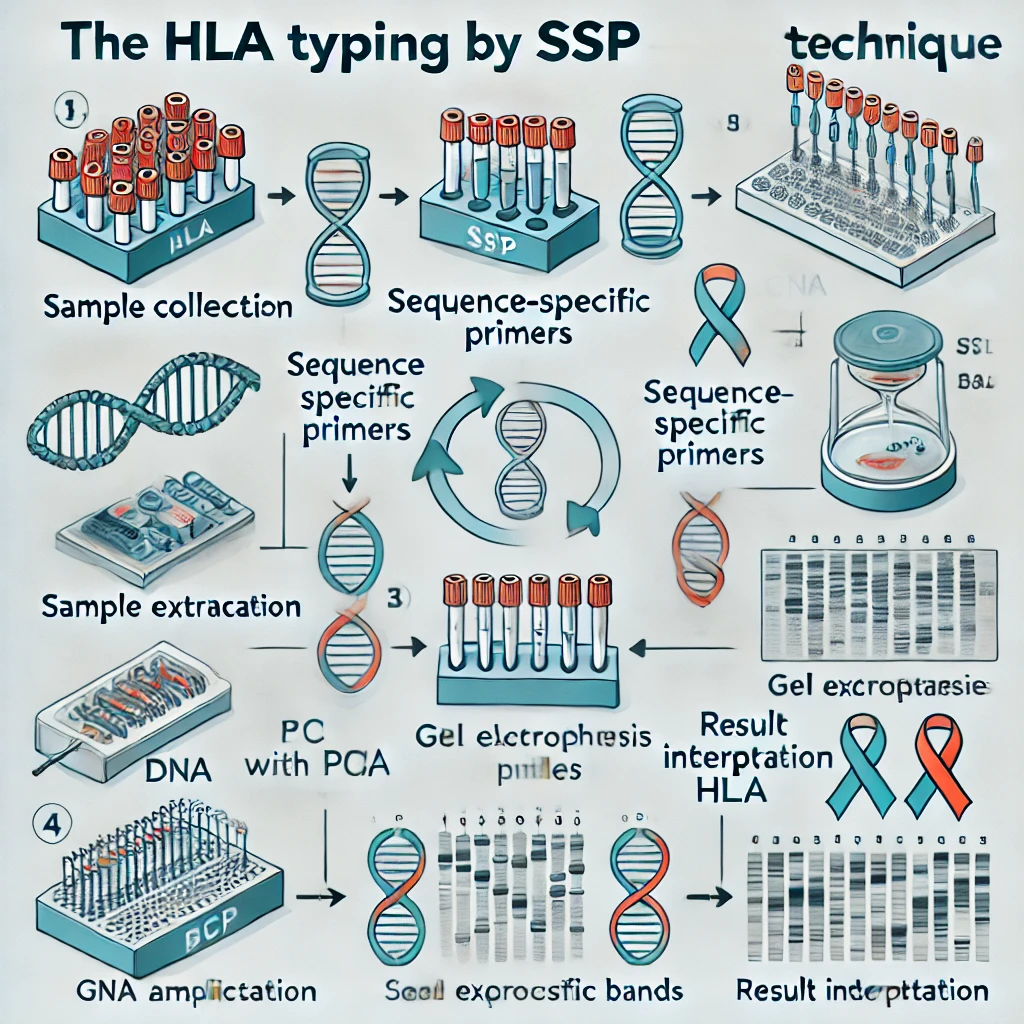Introduction
Human Leukocyte Antigen (HLA) typing plays a crucial role in fields such as transplantation, immunology, and personalized medicine. Among the methods available, Sequence-Specific Primers (SSP) offer a reliable approach to accurately determine HLA alleles, ensuring compatibility in organ transplantation and guiding treatment decisions. In this blog, we’ll explore how HLA typing by SSP works, its clinical significance, and why it is one of the preferred techniques in HLA laboratories worldwide.

What is HLA Typing?
The HLA system is essential in the immune system’s ability to recognize self from non-self. HLA molecules are highly polymorphic proteins found on cell surfaces and are especially important in tissue compatibility. HLA typing involves identifying these genetic variations, which is vital for matching organ donors with recipients, assessing disease susceptibility, and managing autoimmune conditions.
Overview of SSP Technique in HLA Typing
The SSP (Sequence-Specific Primers) technique uses PCR-based amplification to detect specific HLA alleles. In SSP typing:
- Unique primer pairs are designed to match the DNA sequences unique to each allele.
- When DNA is amplified using these primers, only matching alleles are amplified, enabling precise allele identification.
- SSP is known for its high specificity and the ability to yield quick results.
Steps in HLA Typing by SSP
Sample Preparation: DNA is extracted from the sample (blood or tissue).
Primer Design: Sequence-specific primers are used to target specific HLA alleles.
PCR Amplification: Each primer pair amplifies only the matching allele, making SSP a highly targeted technique.
Gel Electrophoresis and Interpretation: Amplified DNA fragments are separated, and allele-specific bands are analyzed to confirm HLA types.
Advantages of the SSP Method
Precision and Specificity: SSP uses allele-specific primers, which enhance accuracy in detecting particular HLA types.
Speed and Efficiency: PCR with SSP provides rapid results, often within a few hours.
No Cross-Reactivity: SSP minimizes cross-reactivity due to the unique matching between primers and target sequences.
Cost-Effective: Compared to some advanced typing methods, SSP is relatively affordable, making it accessible for many laboratories.
Clinical Applications of HLA Typing by SSP
Organ and Stem Cell Transplantation: Ensuring compatibility between donor and recipient HLA types reduces the risk of rejection and enhances transplant success rates.
Disease Association Studies: Certain HLA types are associated with increased susceptibility to autoimmune diseases like Type 1 diabetes, rheumatoid arthritis, and multiple sclerosis.
Personalized Medicine: SSP helps tailor treatments based on an individual’s HLA profile, especially in immunotherapy and drug sensitivity predictions.
Challenges and Limitations
While SSP is an excellent method for HLA typing, it has some limitations:
- Requires Skilled Interpretation: Gel electrophoresis and band pattern analysis require expertise to interpret accurately.
- Lower Resolution: SSP may lack the resolution of high-throughput sequencing techniques, which provide deeper allele analysis.
Conclusion
HLA typing by SSP is a well-established, reliable technique widely used in transplant immunology and research. Its high specificity, quick turnaround time, and cost-effectiveness make it an essential tool for HLA laboratories globally. As advancements in PCR and genomic analysis continue, SSP remains a robust choice for those seeking precise HLA typing results.







